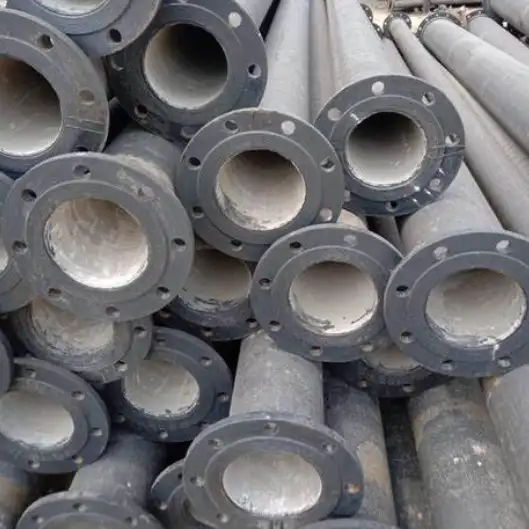Ductile iron, also known as nodular cast iron or spheroidal graphite iron, is a high-strength, high-ductility material widely used in engineering applications. The ASTM A536 standard specification defines the requirements for ductile iron castings, outlining various grades based on tensile strength, yield strength, and elongation. This article delves into the specifics of ASTM A536 ductile iron, its chemical composition, mechanical properties, applications, and more.

1. Introduction to ASTM A536
ASTM A536 is the standard specification for ductile iron castings, established by ASTM International. It covers castings made from ductile iron, which is characterized by the presence of spheroidal graphite nodules in its microstructure. These nodules impart improved mechanical properties compared to traditional gray cast iron. The standard specifies various grades of ductile iron, each with defined mechanical properties suitable for different applications.
2. Chemical Composition of ASTM A536 Ductile Iron
The chemical composition of ASTM A536 ductile iron varies depending on the specific grade. However, common elements include:
-
Carbon (C): Typically ranges from 3.4% to 3.8%.
-
Silicon (Si): Usually between 2.0% and 2.5%.
-
Manganese (Mn): Approximately 0.3% to 0.5%.
-
Magnesium (Mg): Added to promote the formation of spheroidal graphite.
-
Phosphorus (P): Limited to enhance machinability.
-
Sulfur (S): Kept low to prevent the formation of iron sulfides.
These elements contribute to the material’s strength, ductility, and castability.
3. Mechanical Properties of ASTM A536 Ductile Iron
The mechanical properties of ASTM A536 ductile iron are categorized based on different grades:
-
Tensile Strength: Ranges from 60,000 psi (414 MPa) to 120,000 psi (827 MPa).
-
Yield Strength: Varies from 40,000 psi (276 MPa) to 90,000 psi (621 MPa).
-
Elongation: Typically between 2% and 10%, depending on the grade.
These properties make ductile iron suitable for applications requiring high strength and ductility.
4. Grades of ASTM A536 Ductile Iron
ASTM A536 defines several grades of ductile iron, each with specific mechanical properties:
-
Grade 60-40-18: Offers excellent ductility and impact resistance.
-
Grade 65-45-12: Provides higher strength and wear resistance.
-
Grade 70-50-05: Suitable for applications requiring high strength and moderate elongation.
-
Grade 80-55-06: Combines high strength with good machinability.
-
Grade 100-70-03: Offers very high strength but lower elongation.
-
Grade 120-90-02: Provides the highest strength among the grades.
Each grade is designed to meet specific performance requirements for various applications.
5. Manufacturing and Casting Processes
The production of ASTM A536 ductile iron involves several key steps:
-
Melting: The base iron is melted in an induction furnace.
-
Inoculation: Magnesium is added to promote the formation of spheroidal graphite.
-
Pouring: The molten metal is poured into molds to form the desired shapes.
-
Cooling: Controlled cooling rates are maintained to achieve the desired microstructure.
-
Machining: Post-casting machining is performed to achieve final dimensions and surface finish.
These processes ensure that the final product meets the stringent requirements of ASTM A536.
6. Applications of ASTM A536 Ductile Iron
Ductile iron conforming to ASTM A536 is used in a wide range of applications:
-
Automotive Industry: Components such as engine blocks, crankshafts, and brake rotors.
-
Pipelines: Pipes and fittings for water and sewage systems.
-
Industrial Equipment: Parts like gears, housings, and brackets.
-
Construction: Manhole covers, grates, and other infrastructure components.
The material’s combination of strength and ductility makes it ideal for these demanding applications.
7. Heat Treatment and Surface Finishing
To enhance the properties of ASTM A536 ductile iron, heat treatment processes such as stress relieving and annealing may be applied. These treatments help to reduce internal stresses and improve machinability. Surface finishing techniques, including shot blasting and coating, are also employed to improve corrosion resistance and surface appearance.
8. Corrosion Resistance and Durability
Ductile iron conforming to ASTM A536 exhibits good resistance to corrosion, particularly in environments where exposure to elevated temperatures is common. The ferritic matrix contributes to its durability, allowing it to perform reliably over extended periods. However, in highly corrosive environments, additional protective coatings or alloying elements may be necessary to enhance its resistance.
9. Frequently Asked Questions (FAQs)
Q1: What is the significance of the carbon content in ASTM A536?
The carbon content in ASTM A536 is crucial for the formation of graphite nodules, which impart ductility to the material. A minimum carbon content of 3.00% ensures that the iron has sufficient carbon to form these nodules, enhancing its ability to deform without fracturing under stress.
Q2: How does ASTM A536 compare to other ductile iron grades?
Compared to other ductile iron grades, ASTM A536 has a lower tensile strength but higher ductility, making it suitable for applications where resistance to thermal expansion and contraction is critical. Grades like ASTM A395 offer higher strength but may lack the same level of ductility.
Q3: Can ASTM A536 be used in cryogenic applications?
ASTM A536 is designed for elevated temperature applications and may not perform optimally at cryogenic temperatures. For cryogenic applications, materials with better low-temperature properties, such as certain austenitic stainless steels, are recommended.
Q4: What are the advantages of using ASTM A536 in pressure-retaining components?
The high ductility of ASTM A536 allows pressure-retaining components to absorb energy and deform without fracturing, which is advantageous in applications subjected to thermal cycling and pressure fluctuations.
Q5: Are there any limitations to using ASTM A536?
While ASTM A536 offers excellent ductility and thermal resistance, its tensile strength is lower than some other ductile iron grades. Therefore, it may not be suitable for applications requiring maximum strength.
Q6: How does the manufacturing process affect the properties of ASTM A536?
The manufacturing process, including melting, inoculation, pouring, and cooling, directly influences the microstructure and properties of ASTM A536. Controlled processes ensure the formation of the desired ferritic matrix and graphite nodules, optimizing the material’s performance.
For more detailed information on ASTM A536 and its applications, refer to the official ASTM A536/A536M-84(2019) standard.
